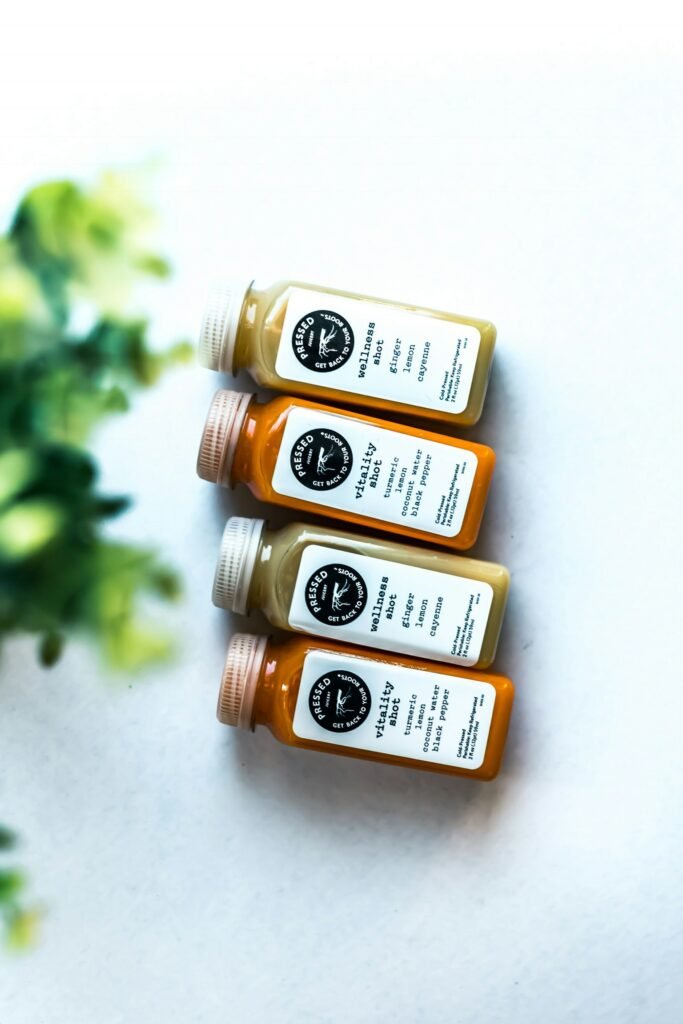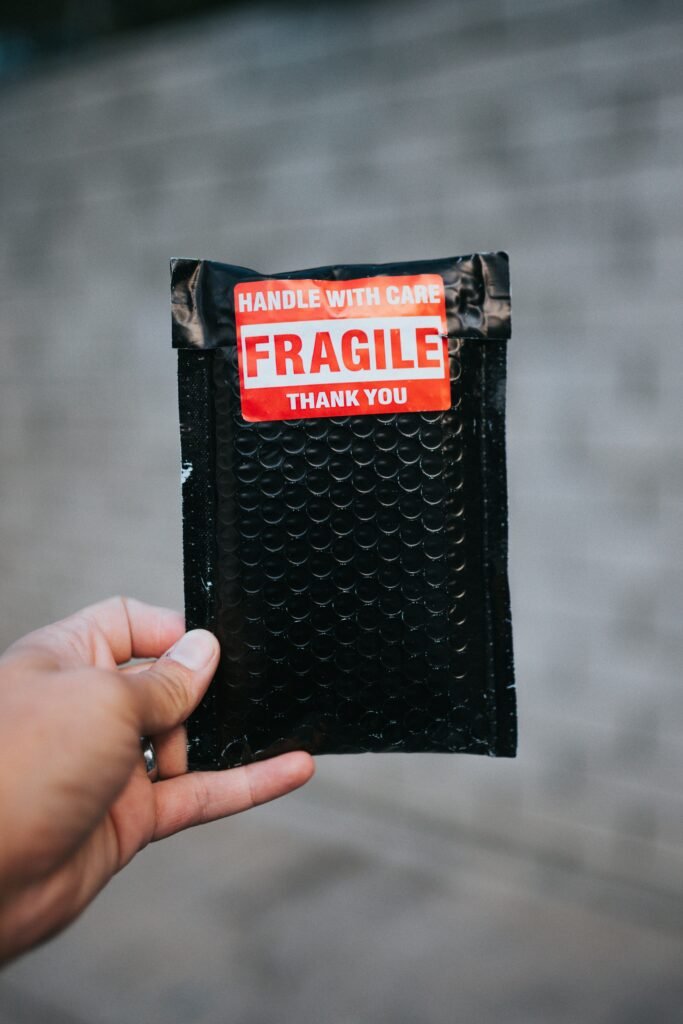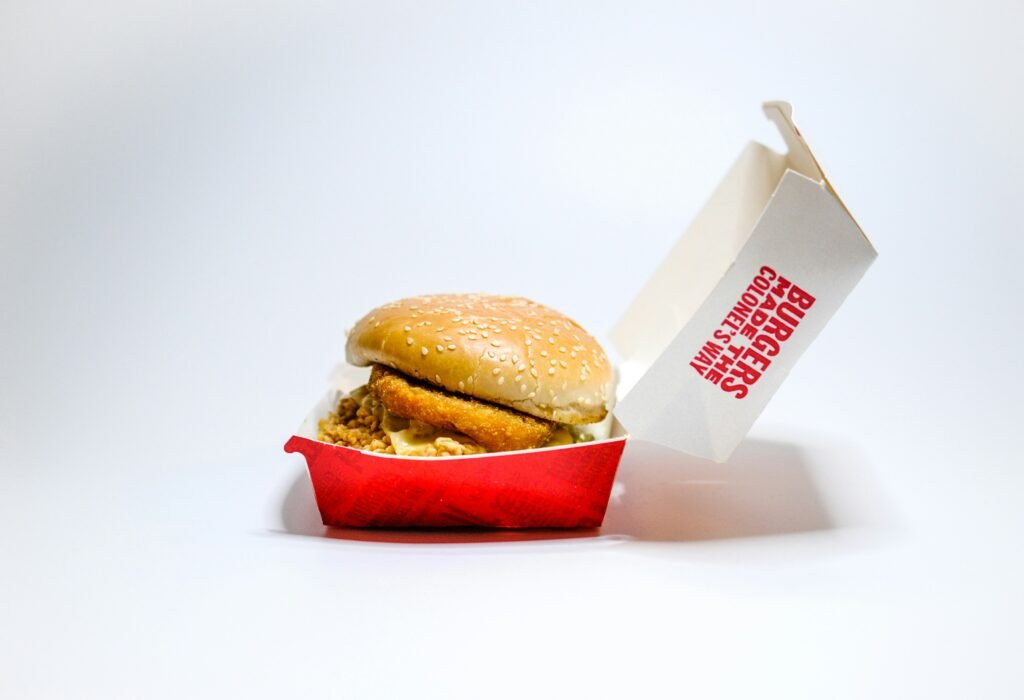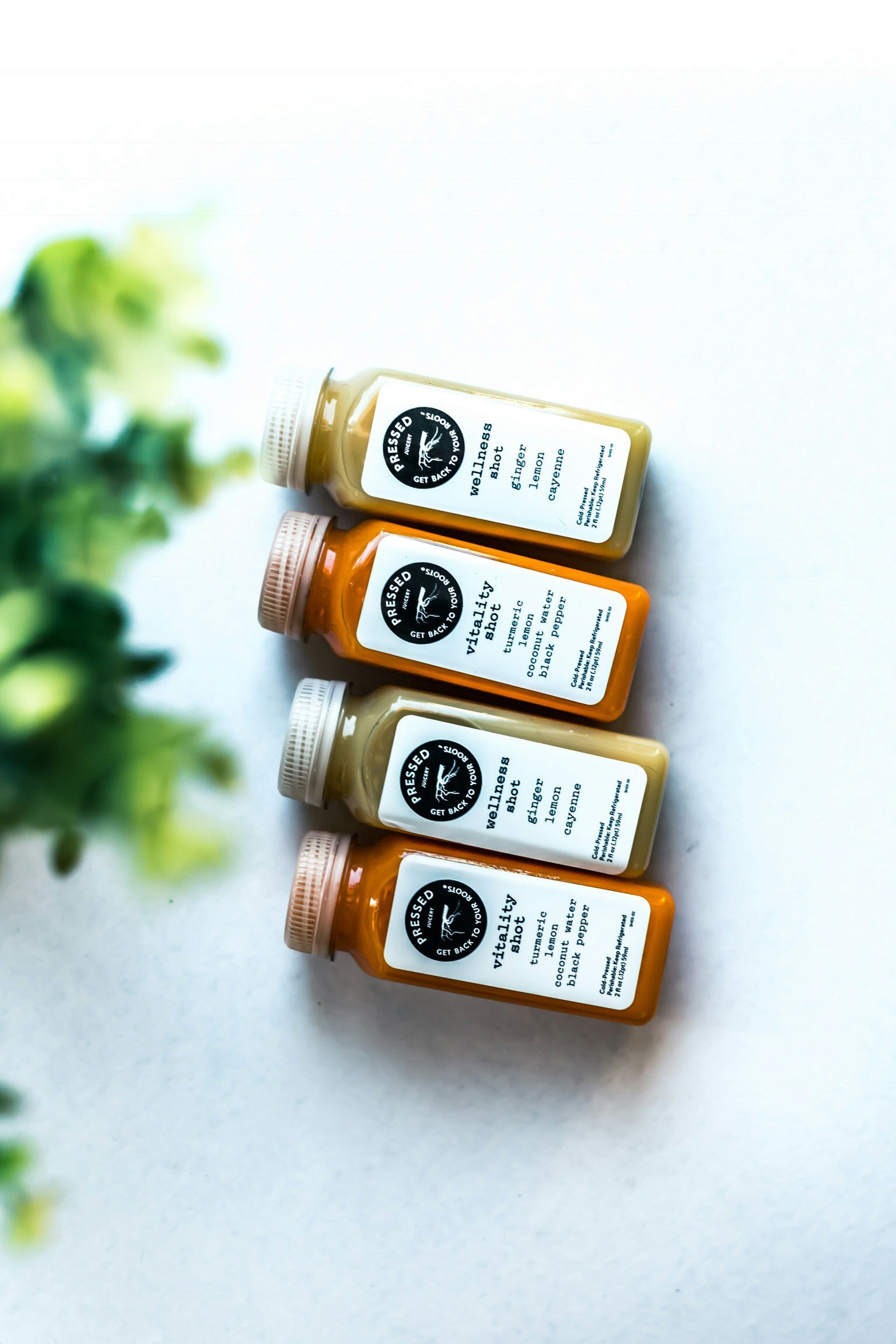Imagine a world where we can enjoy the convenience of plastic packaging without harming the environment. Well, that world is now becoming a reality with the revolutionary concept of sustainable plastic boxes. These innovative packaging solutions are designed to minimize waste, reduce carbon emissions, and promote a more eco-friendly approach to consumer goods. In this article, we will explore the latest trends in eco-friendly and sustainable plastic boxes and how they are reshaping the future of packaging. Get ready to discover a greener way to protect and preserve our planet.

This image is property of images.unsplash.com.
Trends in Eco-Friendly and Sustainable Plastic Boxes
Increased consumer demand for sustainable packaging
In recent years, there has been a significant increase in consumer demand for eco-friendly and sustainable packaging. People are becoming more aware of the environmental impact of traditional plastic packaging and are actively seeking alternatives that are better for the planet. This growing demand is pushing manufacturers and brands to invest in sustainable packaging solutions, including plastic boxes that are made from recycled or biodegradable materials.
Growing awareness of environmental issues
An increased understanding of the environmental issues we face, such as plastic pollution and climate change, has also contributed to the rise in eco-friendly packaging trends. Consumers are now more educated about the impact that their purchasing decisions can have on the environment and are choosing products packaged in sustainable plastic boxes as a way to reduce their carbon footprint.
Government regulations and industry standards
Government regulations and industry standards play a crucial role in driving the adoption of sustainable plastic boxes. Many countries have implemented measures to discourage the use of single-use plastics and promote the use of environmentally friendly packaging. In addition, industry associations are setting guidelines and standards for sustainable packaging practices, prompting businesses to make the necessary changes to align with these requirements.
Advancements in technology and materials
Advancements in technology and materials have also contributed to the popularity of eco-friendly plastic boxes. Researchers and manufacturers are constantly exploring new ways to create packaging that is both environmentally friendly and functional. This has led to the development of innovative materials, such as biodegradable plastics and plant-based alternatives, which offer sustainable options for packaging solutions. Additionally, advancements in manufacturing processes have made it easier and more cost-effective to produce sustainable plastic boxes at a larger scale.
Benefits of Sustainable Plastic Boxes
Reduction in carbon footprint
One of the key benefits of using sustainable plastic boxes is the reduction in carbon footprint. Traditional plastic packaging is typically made from fossil fuels and contributes to greenhouse gas emissions during production and disposal. In contrast, sustainable plastic boxes often use recycled materials or materials derived from renewable sources, resulting in lower carbon emissions throughout the lifecycle of the packaging. By opting for sustainable options, businesses can play a significant role in reducing their carbon footprint and mitigating climate change.
Conservation of natural resources
Sustainable plastic boxes also help conserve natural resources. Many eco-friendly packaging materials are made from recycled plastics or plant-based alternatives, which reduces the need for virgin materials. By using recycled plastics instead of virgin plastics, manufacturers can help conserve valuable resources and reduce the strain on the environment. Additionally, plant-based alternatives, such as bioplastics, offer a renewable and sustainable alternative to traditional plastics, further contributing to the conservation of natural resources.
Improved brand image and customer loyalty
Adopting sustainable packaging practices, including the use of eco-friendly plastic boxes, can significantly improve a brand’s image and foster customer loyalty. Consumers are increasingly conscious of the environmental impact of their purchasing choices and are more likely to support brands that share their values. By visibly demonstrating a commitment to sustainability through the use of eco-friendly packaging, businesses can attract environmentally conscious consumers who are more likely to become loyal customers.
Cost-effectiveness and operational efficiency
Contrary to popular belief, sustainable plastic boxes can also offer cost-effective and operational efficiency benefits for businesses. While the upfront costs of sourcing sustainable materials or implementing new packaging designs may be higher, the long-term savings can be significant. For instance, using recycled plastics can often be less expensive than virgin plastics, and innovative packaging designs, such as minimalist and lightweight options, can lead to reduced shipping costs. Additionally, by optimizing their packaging processes, businesses can improve operational efficiency and reduce waste, resulting in cost savings.

This image is property of images.unsplash.com.
Eco-Friendly Materials for Plastic Boxes
Biodegradable plastics
Biodegradable plastics are a popular choice for sustainable plastic boxes. These plastics are designed to break down naturally in the environment through biological processes, such as the action of microorganisms. This means that they do not accumulate in landfills or oceans, reducing the environmental impact significantly. Biodegradable plastics can be made from various sources, including plant-based materials or petrochemicals that are modified to enhance their biodegradability.
Compostable plastics
Compostable plastics are similar to biodegradable plastics but have additional requirements. These plastics are not only designed to break down in the environment but also under specific composting conditions. They are often made from renewable resources, such as corn or potato starch, and can be composted along with organic waste. Compostable plastic boxes offer a sustainable solution that not only reduces waste but also produces nutrient-rich compost that can be used in agriculture.
Recycled plastics
Using recycled plastics is another effective way to create eco-friendly plastic boxes. Recycled plastics are made by processing and transforming post-consumer or post-industrial plastic waste into new packaging materials. By diverting plastic waste from landfills and giving it a new life, recycled plastic boxes contribute to the circular economy and help reduce the demand for virgin plastics. This not only conserves valuable resources but also reduces energy consumption and greenhouse gas emissions associated with the production of new plastics.
Plant-based alternatives
Plant-based alternatives, such as bioplastics, are gaining popularity as sustainable materials for plastic boxes. These alternatives are typically made from renewable plant sources, such as sugarcane, corn, or wood pulp. By utilizing plant-based materials, plastic boxes can be created with a significantly lower carbon footprint compared to those made from fossil fuel-based plastics. Plant-based alternatives are designed to be biodegradable or compostable, offering an eco-friendly solution that reduces reliance on non-renewable resources.
Innovative Designs and Features
Reusable and refillable packaging
One of the most significant trends in sustainable plastic boxes is the adoption of reusable and refillable packaging designs. Reusable plastic boxes are designed to be durable and long-lasting, allowing consumers to reuse them multiple times before they reach the end of their lifecycle. Refillable packaging takes this concept one step further by allowing consumers to replenish the product inside without the need for new packaging. These designs significantly reduce waste generation and offer a more sustainable solution compared to single-use packaging.
Minimalist and lightweight designs
Minimalist and lightweight packaging designs are becoming increasingly popular as businesses seek to reduce material usage and optimize logistics. These designs aim to eliminate excess packaging and utilize only the necessary amount of materials to protect and present the product. By using lightweight materials, such as thin-walled plastics, packaging weight is reduced, resulting in lower shipping costs and reduced carbon emissions during transportation. Additionally, minimalist designs often result in more aesthetically pleasing and easily stackable packaging solutions.
Smart packaging with IoT integration
Another exciting development in sustainable plastic boxes is the integration of smart packaging with Internet of Things (IoT) technology. Smart packaging includes features like sensors and trackers that provide real-time information about the product’s freshness, temperature, or location. By utilizing IoT-enabled packaging, businesses can reduce waste by optimizing inventory management and ensuring the timely delivery of fresh products. Smart packaging also enables better traceability, allowing for improved product safety and transparency.
Tamper-evident and secure packaging
Tamper-evident and secure packaging is crucial in industries where product safety and integrity are paramount, such as pharmaceuticals or food and beverages. Sustainable plastic boxes can incorporate tamper-evident features, such as seals or closures that show any signs of tampering. This not only ensures the safety of the product but also instills trust in consumers. Secure packaging designs can include features like locks or mechanisms that prevent unauthorized access, providing an added layer of protection for valuable or sensitive products.

This image is property of images.unsplash.com.
Applications of Sustainable Plastic Boxes
Food and beverage packaging
Sustainable plastic boxes find extensive use in food and beverage packaging. From fresh produce to bakery items, these boxes offer a hygienic and eco-friendly solution for storing and transporting food. Additionally, the use of sustainable materials ensures that the packaging does not leach harmful chemicals into the food, guaranteeing the safety of consumers. Sustainable plastic boxes can be found in various forms, including trays, clamshells, bottles, and containers, catering to the diverse needs of the food and beverage industry.
Cosmetics and personal care products
The cosmetics and personal care industry is also witnessing a shift towards sustainable plastic boxes. With increasing consumer demand for natural and organic products, brands are adopting eco-friendly packaging that aligns with their values. Sustainable plastic boxes are used for packaging a wide range of products, including skincare items, shampoo and conditioner bottles, makeup palettes, and more. These boxes not only reduce the environmental impact of packaging but also enhance the overall brand image and appeal to conscious consumers.
Electronics and technology
The electronics and technology industry is another sector where sustainable plastic boxes are becoming more prevalent. As consumers upgrade their devices more frequently, the need for sustainable packaging options becomes crucial. Companies are now exploring alternative materials and designs to reduce the environmental impact of packaging electronics. Sustainable plastic boxes provide protection during transportation and storage while minimizing waste and the use of non-renewable resources.
Medical and pharmaceutical packaging
In the medical and pharmaceutical industry, strict regulations and safety requirements make sustainable plastic boxes an ideal choice. These boxes are used for packaging and protecting medical devices, prescription medications, and healthcare products. As sustainability becomes a priority for the industry, manufacturers are striving to develop packaging solutions that adhere to safety standards while reducing the environmental impact. Sustainable plastic boxes help achieve these goals by using eco-friendly materials and incorporating features that ensure product integrity and patient safety.
Challenges and Limitations
Complex recycling processes
While sustainable plastic boxes offer numerous benefits, the recycling processes for certain eco-friendly materials can be complex. Biodegradable and compostable plastics, for example, often require specialized processing facilities to break them down effectively. Without proper infrastructure and collection systems, these materials may end up in landfills or recycling facilities ill-equipped to handle them, defeating their purpose. Addressing these challenges requires investment in infrastructure and establishing appropriate recycling systems to ensure that eco-friendly plastic boxes can be effectively recycled and repurposed.
Limited availability of eco-friendly materials
Another challenge is the limited availability of eco-friendly materials for plastic boxes. While there has been significant progress in the development of sustainable materials, the availability of these materials on a large scale is still limited. Manufacturers may face difficulties in sourcing the necessary eco-friendly materials, leading to higher costs or reliance on non-renewable alternatives. Overcoming this limitation requires increased investment in the research and development of sustainable materials, as well as establishing reliable supply chains to ensure a consistent and readily available source of eco-friendly materials.
Resistance from traditional packaging industry
The traditional packaging industry, which relies heavily on conventional plastics, may resist the shift towards sustainable plastic boxes. This resistance can stem from various factors, including the perceived higher cost of sustainable materials, concerns about the functional performance of eco-friendly alternatives, and resistance to change. Overcoming this resistance requires education and awareness-building about the benefits of sustainable packaging, as well as showcasing successful case studies that demonstrate the feasibility and economic advantages of adopting eco-friendly practices.
Consumer education and behavior change
An essential aspect of successful adoption of sustainable plastic boxes is consumer education and behavior change. Many consumers are not aware of the environmental impact of traditional packaging or the availability of eco-friendly alternatives. Educating consumers about the benefits of sustainable packaging and encouraging them to make conscious purchasing decisions can help drive demand and create a market for eco-friendly plastic boxes. Businesses can play a vital role in this by actively promoting their efforts towards sustainability and providing clear information to consumers about the eco-friendly features of their packaging.
Successful Case Studies
Loop’s reusable packaging system
Loop, a groundbreaking initiative launched by TerraCycle, is revolutionizing packaging with its reusable packaging system. The program partners with brands and retailers to offer consumers durable and reusable plastic boxes. Consumers can purchase products in these boxes and return them to participating collection points once used. The boxes are then cleaned, refilled, and redistributed, eliminating the need for single-use packaging. Loop’s reusable packaging system has gained attention and support from both consumers and brands, showcasing the viability and desirability of sustainable plastic boxes.
Plantic’s plant-based biodegradable trays
Plantic, an Australian packaging manufacturer, has developed plant-based biodegradable trays as an alternative to traditional plastic packaging. These trays are made from renewable sources, such as corn and potato starch, and can be easily composted. Plantic’s plant-based trays offer the same level of functionality and protection as conventional plastic trays while significantly reducing the environmental impact. The innovative design and sustainable materials have garnered recognition and accolades, positioning Plantic as a leader in sustainable plastic packaging.
Ecover’s refillable detergent bottles
Ecover, a renowned brand in the cleaning and laundry industry, has introduced refillable detergent bottles as part of its commitment to sustainability. The brand offers customers the option to purchase their products in refillable plastic bottles, which can be returned and refilled at designated refill stations. By implementing this system, Ecover has significantly reduced plastic waste and increased the lifespan of its packaging. The refillable detergent bottles have gained popularity among environmentally conscious consumers, further strengthening Ecover’s brand image and customer loyalty.
Package Free Shop’s zero-waste packaging solutions
Package Free Shop, an innovative retail store, is dedicated to providing zero-waste packaging solutions across a wide range of products. The store emphasizes the use of sustainable plastic boxes, compostable materials, and reusable packaging options to minimize waste generation. Package Free Shop offers consumers the opportunity to purchase everyday essentials packaged in eco-friendly plastic boxes, helping individuals reduce their environmental impact. The success of Package Free Shop highlights the potential for sustainable plastic boxes to create a positive change in the retail industry.
Collaboration and Partnerships
Relationships between brands and sustainable packaging suppliers
Collaboration between brands and sustainable packaging suppliers is essential for driving change in the packaging industry. By partnering with suppliers who specialize in eco-friendly materials and innovative designs, brands can access expertise and resources to develop sustainable plastic boxes that align with their values. These partnerships also provide an opportunity for mutual support and knowledge-sharing, promoting the advancement of sustainable packaging practices on a larger scale.
Collaboration between packaging manufacturers and recycling facilities
To ensure the proper recycling and repurposing of eco-friendly plastic boxes, collaboration between packaging manufacturers and recycling facilities is crucial. By working together, manufacturers can design packaging that is easier to recycle and compatible with existing recycling infrastructure. Simultaneously, recycling facilities can invest in specialized equipment and processes necessary to efficiently handle eco-friendly materials. This collaboration helps close the loop in the circular economy, ensuring that sustainable plastic boxes can be effectively recycled and reintegrated into the production cycle.
Partnerships with non-profit organizations and environmental advocates
Partnerships with non-profit organizations and environmental advocates can play a significant role in promoting the use of sustainable plastic boxes. These organizations often have established networks and platforms for raising awareness and advocating for sustainable practices. By partnering with them, businesses can amplify their sustainability messages and gain credibility among consumers who are more likely to support brands associated with reputable environmental organizations.
Government initiatives and incentives
Government initiatives and incentives are critical drivers for the adoption of sustainable plastic boxes. Governments can implement policies and regulations that encourage the use of eco-friendly packaging materials, incentivize businesses to adopt sustainable practices, and support research and development in sustainable packaging solutions. By providing financial assistance, tax incentives, or subsidies, governments can help offset the initial costs associated with transitioning to eco-friendly packaging, making it more accessible and feasible for businesses of all sizes.
Future Outlook
Advancements in bioplastics and sustainable materials
The future of sustainable plastic boxes looks promising, with advancements in bioplastics and other sustainable materials leading the way. Researchers and manufacturers are continuously exploring new materials and refining existing ones to improve their performance, cost-effectiveness, and environmental impact. As technology continues to advance, we can expect to see an increasing variety of sustainable plastic box options that offer enhanced functionality and reduced environmental footprint.
Integration of digital technologies in packaging
The integration of digital technologies in packaging is set to revolutionize the industry, including sustainable plastic boxes. Smart packaging with IoT integration provides opportunities for improved inventory management, product traceability, and enhanced consumer engagement. By incorporating sensors, tracking devices, and other digital features, sustainable plastic boxes can offer real-time information about the product’s quality, authenticity, and journey, ensuring greater transparency and providing value to both businesses and consumers.
Increased emphasis on circular economy
The concept of the circular economy, which aims to minimize waste and maximize resource efficiency, will continue to gain traction in the packaging industry. Sustainable plastic boxes play an integral role in realizing the vision of a circular economy, as they can be recycled, composted, or reused multiple times. With growing awareness and support for the circular economy, businesses will increasingly prioritize the design and production of packaging materials and solutions that align with this sustainable and regenerative approach.
Shift towards a holistic approach in packaging innovation
As the importance of sustainability becomes more evident, there will be a shift towards a holistic approach in packaging innovation. This approach will consider the entire lifecycle of packaging, from material sourcing and manufacturing to end-of-life disposal or recycling. Sustainable plastic boxes will be designed with circularity in mind, incorporating features that enable easy recycling, optimize material usage, and minimize environmental impact. By taking a holistic approach, businesses can create packaging solutions that are not only environmentally friendly but also economically viable and socially responsible.
Conclusion
The revolution of sustainable plastic boxes is well underway, driven by increased consumer demand, growing awareness of environmental issues, government regulations, and advancements in technology and materials. The benefits of using sustainable plastic boxes are numerous, including a reduction in carbon footprint, conservation of natural resources, improved brand image and customer loyalty, and cost-effectiveness. Biodegradable plastics, compostable plastics, recycled plastics, and plant-based alternatives offer eco-friendly materials for plastic boxes. Innovative designs and features, such as reusable packaging, minimalist and lightweight designs, smart packaging with IoT integration, and tamper-evident and secure packaging, are shaping the future of sustainable packaging.
Sustainable plastic boxes find applications in various industries, including food and beverage packaging, cosmetics and personal care products, electronics and technology, and medical and pharmaceutical packaging. However, challenges and limitations, such as complex recycling processes, limited availability of eco-friendly materials, resistance from the traditional packaging industry, and the need for consumer education and behavior change, must be addressed to accelerate the adoption of sustainable plastic boxes.
Successful case studies, like Loop’s reusable packaging system, Plantic’s plant-based biodegradable trays, Ecover’s refillable detergent bottles, and Package Free Shop’s zero-waste packaging solutions, showcase the potential and desirability of sustainable plastic boxes. Collaboration and partnerships between brands and sustainable packaging suppliers, packaging manufacturers and recycling facilities, non-profit organizations and environmental advocates, and government initiatives and incentives play crucial roles in driving the transition towards sustainable packaging practices.
Looking to the future, we can expect continued advancements in bioplastics and sustainable materials, the integration of digital technologies in packaging, increased emphasis on the circular economy, and a holistic approach to packaging innovation. The role of consumers and businesses in driving change cannot be overstated, as their choices and actions have a direct impact on the adoption and success of sustainable plastic boxes. With the collective efforts of all stakeholders, the future of sustainable packaging, including the bright future of sustainable plastic boxes, looks promising.
